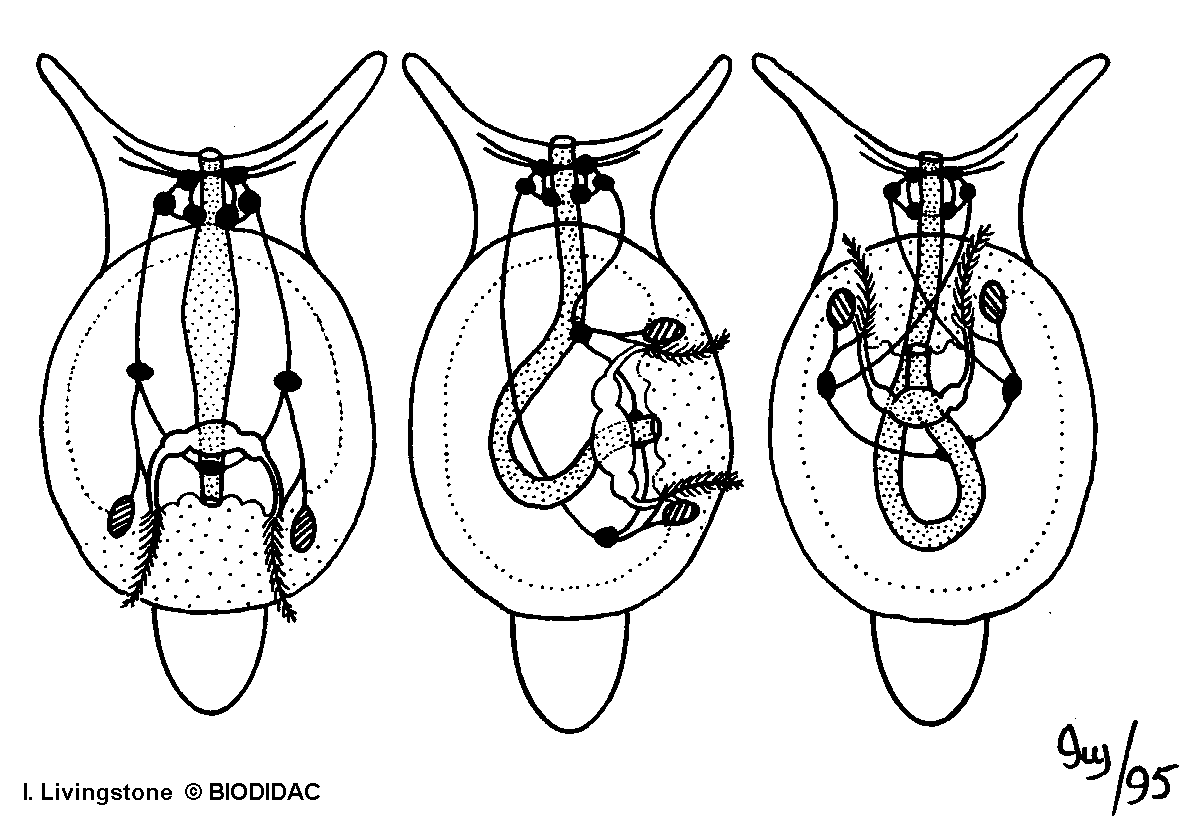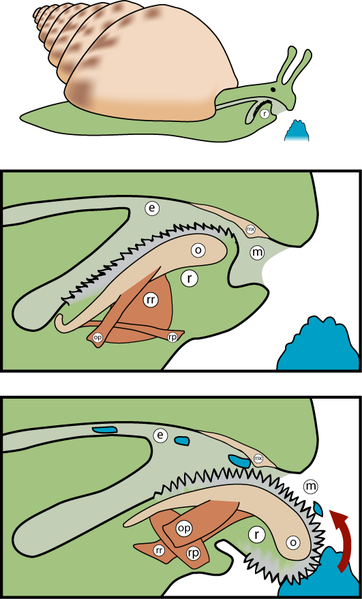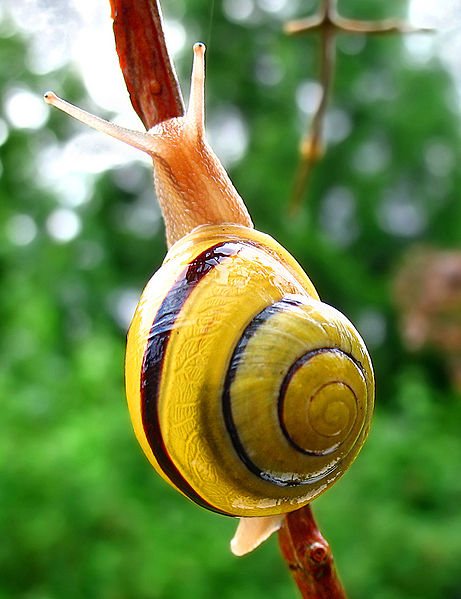
Adaptation
 Fumonelix archeri is from the class Gastropoda. Gastropods are
asymmetrical and typically have coiled shells (Ghiselin,
1966). Gastropods body
undergoes "torsion", a 180-degree twist of their internal organ
so that the anus and the mantle cavity lie above the head (Ghiselin,
1966). This
twisting is an adaptation to eliminate a second opening in the
shell (in the back for the anus), potentially for better
protection against predators and from drying out. There are many
hypotheses for why these particular mollusks undergo torsion and
coiling, but there is no proven reason and no evidence for which
developed first (Ghiselin,
1966).
Fumonelix archeri is from the class Gastropoda. Gastropods are
asymmetrical and typically have coiled shells (Ghiselin,
1966). Gastropods body
undergoes "torsion", a 180-degree twist of their internal organ
so that the anus and the mantle cavity lie above the head (Ghiselin,
1966). This
twisting is an adaptation to eliminate a second opening in the
shell (in the back for the anus), potentially for better
protection against predators and from drying out. There are many
hypotheses for why these particular mollusks undergo torsion and
coiling, but there is no proven reason and no evidence for which
developed first (Ghiselin,
1966).

The
major feeding organ in class Gastropoda is the radula (Padilla,
1998).This feature is
present in most mollusks but the number and size of teeth differ
in different species to adapt to their specific diets (Padilla,
1998).The radula is an adaptive feeding device used for
scraping, cutting and chewing food (Hickman
et al, 2009).

It is also part of the subclass Pulmonata. Pulmonates usually lack gills and their mantle cavity evolves into a functional
lung for breathing (Hickman
et al, 2009). Pulmonates can also be distinguished from
other Gastropods by lacking a operculum (a hard cover for the
shell opening for when the body hides within the shell)(Hickman
et al, 2009).
With the knowledge of the
habitat and specific adaptations this snail has for eating,
check out what it eats and other fun facts about its nutrition
by clicking
here.
To go back to the home page click
here.